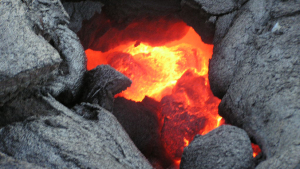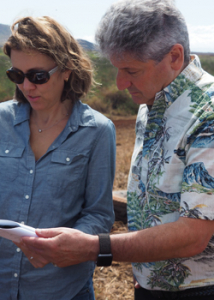
As one of the most geographically isolated regions in the world, Hawaiʻi residents contend with the highest electricity prices in the U.S., about double the national average. This is due largely in part to a heavy dependence on imported petroleum and lack of fossil fuel resources.
However, below the Hawaiian Islands lies a geological hotspot in the Earth’s mantle that has been active for the past 70 million years, formed the island archipelago and continues to fuel Hawaiʻi’s active volcanoes. Because of this hotspot and the presence of subsurface heat, the use of geothermal energy can prove to be a viable option to solve some of the state’s energy woes.

Geothermal electricity is clean, inexpensive and firm—with the last meaning that is “always on” regardless of weather conditions or time of day. Geothermal also has the lowest land footprint compared to solar power and wind, and, unlike the other intermittent resources, no battery storage is needed. Currently, the state’s lone geothermal plant on Hawaiʻi Island produces five times the amount of electricity as one of the state’s largest solar farms, while requiring 80% less land area.
Evidence collected by the University of Hawaiʻi at Mānoa suggests that all of the major Hawaiian Islands may hold the subsurface heat that is necessary to produce geothermal energy. However, the current state of understanding of geothermal potential outside of Kīlauea’s East Rift Zone (KERZ), the most active rift of the state’s most active volcano on Hawaiʻi Island, is very limited. KERZ is where geothermal exploration was focused in the 1970s, and is the only location in the Hawaiian archipelago where geothermal electric power is being produced.
Hawaiʻi Groundwater and Geothermal Resources Center
As Hawaiʻi is the only U.S. state without a geological survey, UH Mānoa has contributed much of what is known about Hawaiʻi’s geology. Since producing Hawaiʻi’s first geothermal well in the 1970s, UH Mānoa has spearheaded Hawaiʻi’s geothermal research, including producing the only two statewide resource assessments by Professors Donald Thomas and Nicole Lautze of the Hawaiʻi Institute of Geophysics and Planetology (HIGP) in 1985 and 2017, respectively. HIGP is housed in the UH Mānoa School of Ocean and Earth Science and Technology.
Realizing the need to provide a central hub from which to disseminate data and information from their numerous geothermal and groundwater research projects throughout the state, Lautze and Thomas founded the Hawaiʻi Groundwater and Geothermal Resources Center (HGGRC) in 2014. HGGRC, led by Lautze, conducts research on Hawaiʻi’s fresh groundwater, geothermal (including shallow geothermal heat pump technology for building cooling) and carbon storage potential.
Hawaiʻi Play Fairway Project

The Hawaiʻi Play Fairway project was among HGGRC’s most important initiatives. UH Mānoa was one of 11 initial phase I projects selected and funded by the U.S. Department of Energy from across the country to identify blind hydrothermal systems (those without surface expression). The project, led by Lautze, received subsequent phase II and III funding from 2014–20 and provided the first statewide geothermal assessment of the Hawaiian Islands since Thomas’ original report in 1985.
Ultimately, the Hawaiʻi Play Fairway Project provided an updated statewide geothermal resource assessment, expanded understanding of Hawaiʻi’s groundwater location and quality, and a roadmap for additional work to better characterize both resources. HGGRC’s philosophy is that more data will bring more knowledge, and that when this knowledge is shared with stakeholders and communities, more informed decisions can be made.
“I think nearly everyone in Hawaiʻi would value a low cost, low footprint, resilient, Indigenous, energy supply. But there are tradeoffs for some. If geothermal has a chance, community engagement will play a critical role,” said Lautze. “HGGRC will continue to work with stakeholders and local communities to advocate for the necessary funding to move the state one step closer to understanding and realizing its geothermal potential.”
She added, “The global geothermal community wonders why there isn’t more geothermal electricity generation in Hawaiʻi. The answer is complex, but I think that if we could get even a small power plant online in a location where the local community is supportive, I think it would be transformative for our state.”
For more on the Hawaiʻi Play Fairway Project objectives, see Noelo’s 2023 story. Noelo is UH’s research magazine from the Office of the Vice President for Research and Innovation.

